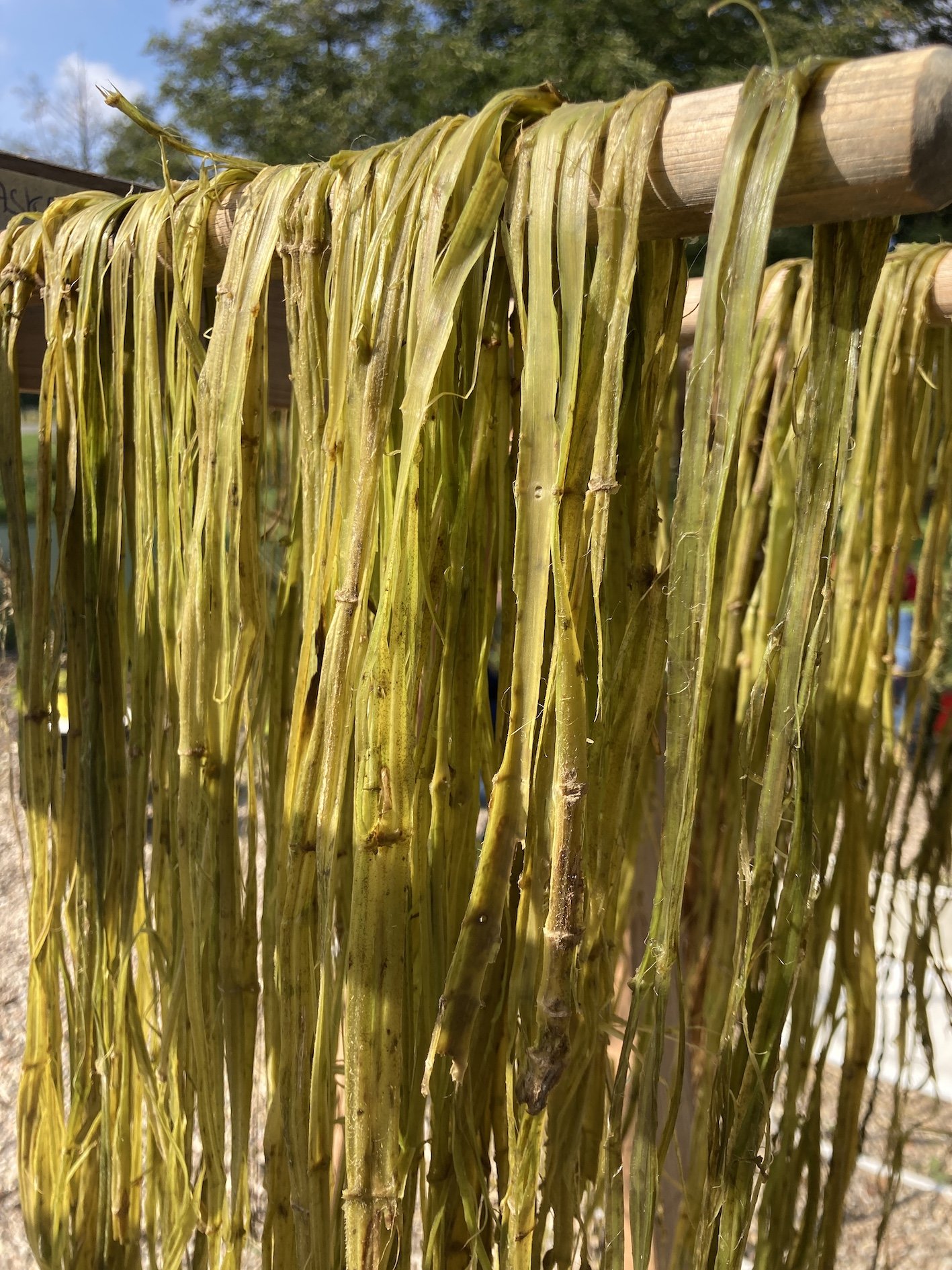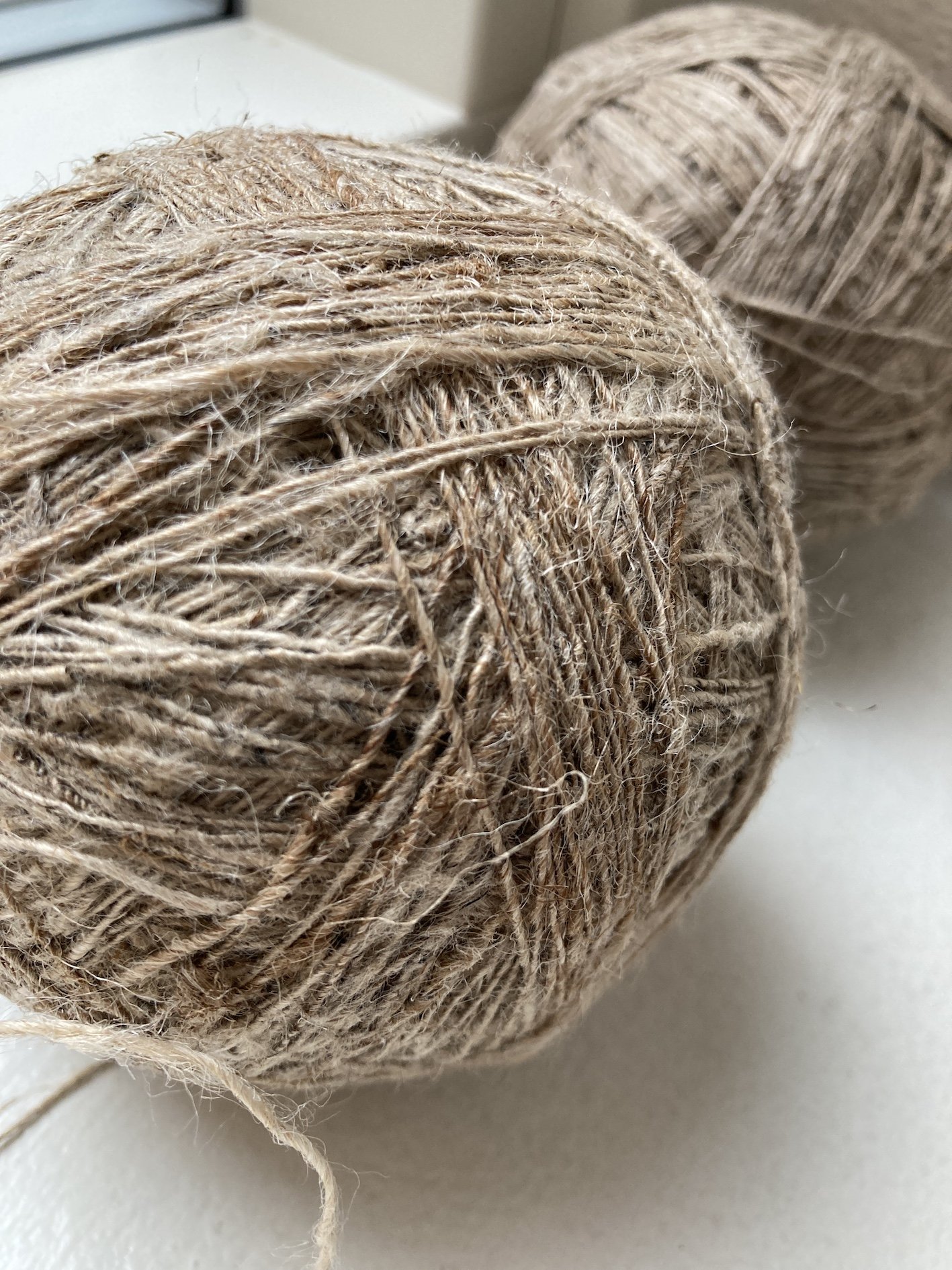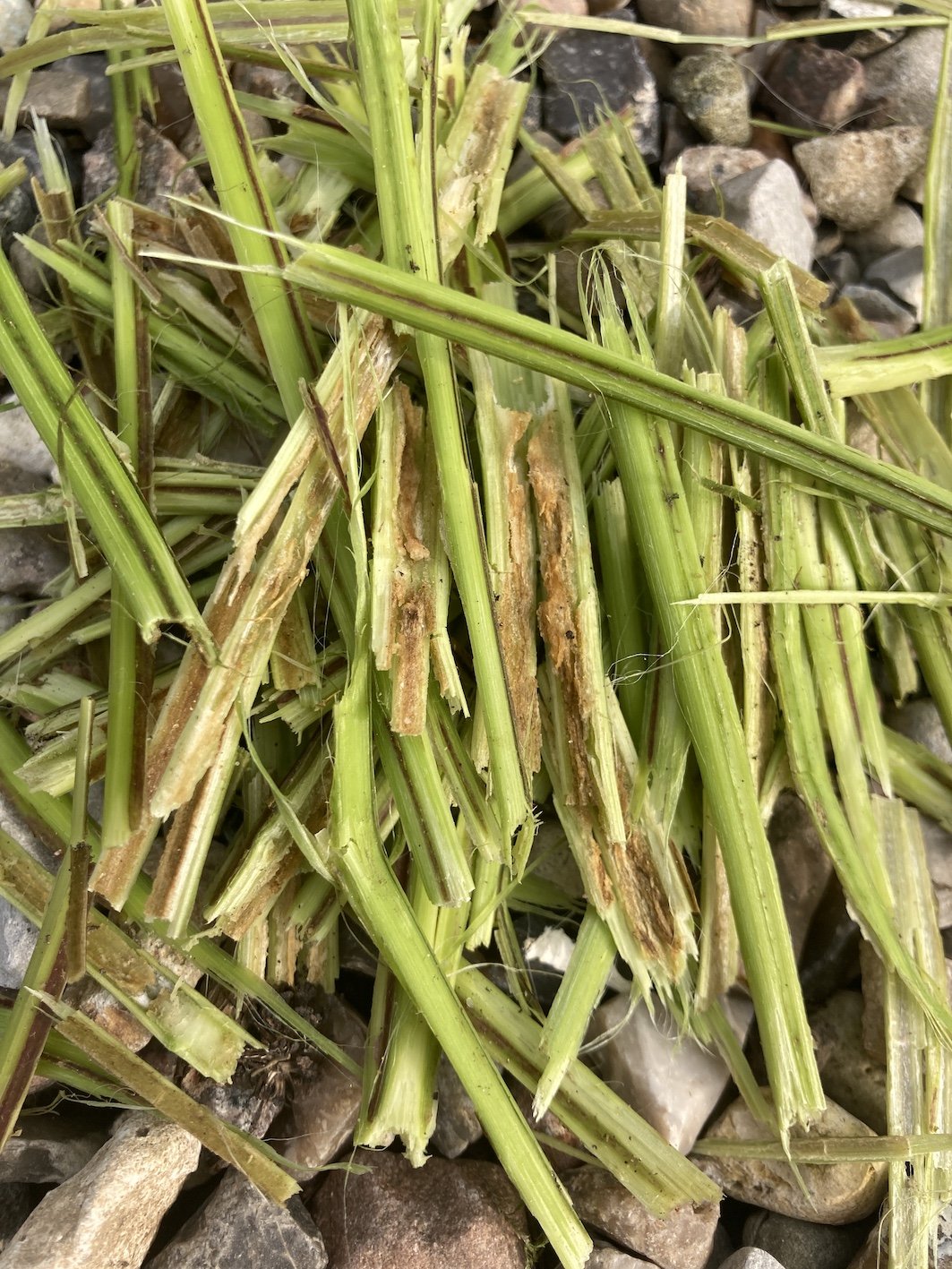Nettle
Nettle
[Urtica dioica]
Family
Urticaceae
Height
Up to 2 meter
Location and climate
In all climates. Grows in soil with high nutrient.
Pollination
Wind
Usage
Textile, yarn, fish net, carpets and paper making. Also edible in pesto, soups, tea and mixed in bread. The fresh young leaves and sprouts are best. Nettle contains a high level of vitamins and minerals such as iron, vitamin C, A and potassium.
The stinging nettle plant is for many people an annoying weed that is hard to get rid off and will sting you if in contact with your skin.
But nettle is a fantastic and versatile plant. It was used during the Bronze Age and later also for soldier uniforms during the Napoleon war and again during The Second World War. Due to a cheaper cotton quality and synthetic fibers the nettle plant was out competed after the war.
The fiber is found right under the outer layer of the stem. This means you need to pull off the outer layer and divide the fiber from the more coarse bark like material. Different techniques are used to do so.
Nettle will, unlike cotton, grow without the use of pesticides and will need no maintenance. All parts of the plants are usable and the fiber is both strong and beautiful. The spun fiber has also been used for fishing nets since the wet nettle yarn is very strong in wet condition.
Nepal has a species of nettle called Allo that is much bigger and with a greater yield than the European version. The use of the Allo nettle varies from fine quality scarfs (knitted), weaved textile to fish nets and tufted carpets. Please read more in the interview section where Danish weaver Ellen Bangsbo shares her knowledge about the nettle fiber in general and especially her experience with the Nepalese nettle plant.
Nettle fiber absorbs dye very well. The roots will give you a yellow color and the leaves a more green/yellow result.
When the leaves are mashed into a porridge and mixed with water you have a very good fertilizer. The same mix is also excellent to improve your compost. Nettle extract is also useful as a fungicide or as a natural insecticide.
Since the plant is widespread across the globe you will find the nettle to be relatively easy to find and probably also in large quantities. You cut the plant close to the ground (use garden gloves) pull off the leaves and from there you can work with the stem in different ways to extract the fiber. You can also knit the raw nettle bark (best when wet) The potential is great and I am curious to know if the nettle material could also be included in the building industry for insulation purpose or as a reinforcement material. Especially the coarse shards that are left after extracting the fibers could be relevant to investigate for this purpose.
I tried to test the nettle fibers for handmade paper and the result turned out ok. Videos about nettle paper making can be found on Youtube.
Nettle tea from the leaves taste good and has a high content of nutrients.
The images here are from a two days course about the nettle plant during early autumn 2022. Location: Hørvævsmuseet Denmark. Teacher: Ellen Bangsbo.
From left:
Dry nettle stem. No processing
Retted nettle stem (dew retting)
Fresh nettle fiber boiled in potassium chloride
Fresh nettle fiber boiled in birch ash.
Nettle fiber from the retted stem.
Nettle fiber boiled in potassium chloride and batted.
Nettle fiber from retted fiber, de-barked and carted.
Nettle fiber from retted fiber, de-barked, carted and spun.








